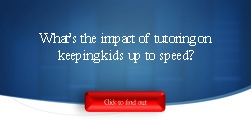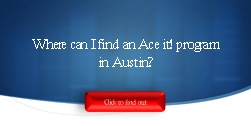Forefront Editor (FF): So Mark, today is the day I find out how well you play with others.
Mark Kiester (MK): Oh, I should be good on that. Those playground skills come in handy just about every day!
Forefront Editor (FF): Perfect, because we’re here to discuss partnership and collaboration across market sectors in driving social impact.
MK: Almost as much fun as Capture the Flag, but not quite.
FF: But I think probably longer term impact. Specifically, I want to discuss the Boys and Girls Clubs of the Austin Area’s (BGCAA) with Sylvan Learning and how crafting partnerships across market segments and communities are improving education outcomes.
MK: Definitely not Capture the Flag, but we are excited about it. Bringing together the BGCAA proven afterschool programming with Sylvan Learning’s proven tutoring skills is targeting two huge education challenges in a way that I think is unique and efficient.
One is taking children who have fallen behind academically during the school year, for whatever reason — illness or a difficult home situation — especially when they are young and especially in reading and math. And we try to reach out to them young because in education there are these break points— 3rd grade, 7th grade and 9th grade. If you are in the 3rd grade and you are not reading and doing basic math at the 3rd grade level, you are behind and will probably stay behind.
So the theory is that if we target the younger BGCAA members for the Sylvan Learning project, assess their reading and math abilities, take those most chronically behind kids and have them participate in the very intensive Sylvan Ace It! tutoring program, then within 6-10 weeks they will be at the level they need to be so they can participate effectively in the classroom—and gain the education they need to succeed.
And two is students who fall behind during the summer break. Research shows that economically disadvantaged kids are more likely to fall back on academic skills than students in the middle class or above. Economically disadvantaged kids don’t have the same access to paid summer camps that bolster skills —basketball skills, computer skills, and acting skills.
This summer was our first chance to bring the Ace It! program into the clubs so that teachers don’t need to back up too far to repeat lost lessons before moving onto new topics.
FF: Is Sylvan coming into the clubs to provide the tutoring?
MK: Absolutely. And in addition to tutoring, Sylvan also provides free parent workshops. Sylvan is not making a profit; they provide the tutoring services at cost. They pay the teachers and provide the supplies. Just the supplies alone cost about $20,000 for about 50-60 kids. Their real cost is a little more than $600 per student.
In Austin, we seek outside funding, and we’ve been fortunate enough to have the Wal-Mart Foundation contribute and renew their support for the fall semester this year. We’re also receiving funding from the KDK Harman Foundation for our summer sessions of Ace It! with special attention to preventing the loss of math skills over the summer break.
(FF) What’s the benefit for Sylvan? Why are they participating?
MK: They are in the education business. And they believe, like we do, that kids must be academically successful to become productive, caring adults. While their true market are kids who have access to advanced help, they understand that becoming academically successful is very difficult for lower-income kids—and the impact that has on the education system and our community.
So they are saying that as a business we have a responsibility to help all kids, not just those who can afford it. But as a business we also have a responsibility not to go broke doing it. So working through a partnership with a 501 c-3 who has a deep history of serving economically disadvantaged kids just makes the perfect sense as a way to execute their mission.
(FF) So, flipping it around, what’s the benefit for BGCAA to participate in this partnership?
MK: It gives us a very impactful program to help the neediest of our kids. It really plays well into our approach; our kids must be academically successful in order to be productive, caring, and responsible citizens. Everything we do is based on getting there.
We know how to use after school hours to teach kids life skills they need. One of those elements is academic achievement. The Sylvan program allows us to make sure kids have the skills they need to succeed academically.
FF: Where do the schools fit into this partnership? Ultimately, the impact of this work of this partnership is being seen in the schools, right?
MK: We’re really supporting their ability to teach low-income kids who are at risk of falling behind. So they’ll see the impact through improved grade point averages, standardized test scores and grade advancements as well as disciplinary referrals.
Look, we’re not trying to become a school. We’re not in the education business, we’re in the academic enhancement and enrichment business and you can’t do that without partnerships. Most of our partnerships are with nonprofits or the schools themselves by placing our clubs in their facilities.
Sylvan makes a living with a unique product and highly scientific model that is proven to be highly effective into that world. By bringing these elements together, we’re able to bring innovative ideas together to let everyone pitch to their strengths in tackling dropout rates and giving low income kids the skills they need.
FF: Is that a benefit of bringing a private entity into the mix? Innovation?
MK: Through private/not-for-profit partnerships you can really turn some heads, turn some light bulbs on. There is a level of flexibility and action that can move the needle sooner rather than later.
Last year, I saw four separate studies on childhood obesity, and I bet they ranged from $20,000 to half a million dollars. And this is where private enterprise can speak up. Private enterprise can say, especially in a time of crisis, let’s quit studying social programs, let’s start supporting social programs. Let’s quit spending our precious dollars on what we already know and implement programs now.
FF: What other ways are private entities engaging to move the needle?
MK: That’s what is so fun about Austin. We have an amazing talent pool and companies that know their success is tied to education outcomes. So here at BGCAA, we are looking for these opportunities to connect talent to programs to needs.
For example, last year during the Dell Youth Connect program they provided us with an advanced computer lab and the funding to hire tutors. So what’s happening? We now have the machines and the software and the tutors to do some amazing things. Our kids were even designing their own games, which require math and science. We’re getting into robotics. See that’s where a partnership pays off, we can’t do that ourselves.
(FF) But it seems like even more than helping low-income kids, these partnerships are raising the bar for the whole academic system.
MK: You’re absolutely right. It’s no secret that the public education system is in crisis right now—for kids across all ends of the economic spectrum.
And we know whether the kid comes from a low income area or the fanciest street in Austin, their success is based not just on whether they can do their multiplication tables, but what they are doing after school, what they did before school, how they are supported.
That’s where these private-public partnerships are really effective—everyone can do their part to provide wrap-around services that are helping develop a complete child.










